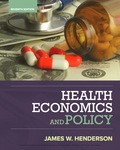Participation Rate Before 1986 Reform Participation Rate After 1986 Reform Treatment Group Control Group 1 Control Group 2 0.479 0.784 0.911 0.497 0.761 0.920
The Earned Income Tex Credit (EITC) is the largest cash-benefit entitlement program in the United States, designed to provide assistance to low-income workers with children. Please analyze how the EITC may affect workers’ labor supply decisions.
1. Using the standard labor supply model (i.e., the neoclassical model of labor-leisure choice), explain how the introduction of the EITC may affect single workers’ decision to participate in the labor force and their choice of hours worked. Use graphs to illustrate discussion.
The study by Eissa and Liebman (1996) examines the impact of the 1986 EITC expansion on labor force participation and hours worked for unmarried low-income women with children. They use data from the Current Population Survey (CPS) for the tax years 1984–1986 and 1988–1990. The tax year 1987 is excluded to allow time for labor supply adjustment. The authors employ a difference-in-differences (DID) approach, using two different control groups:
• Control Group 1: Unmarried women without children and with less than high school education. This control group is more similar to the treatment group in terms of education, but they do not qualify for EITC as they do not have children.
• Control Group 2: Unmarried women with children and with more than high school education
(their predicted income beyond the EITC range). This control group is more similar to the
treatment group in terms of family status (having children), but less similar in terms of
education.
The following table provides the labor force participation rates for the treatment group (unmarried
women with children and with less than high school education) and control groups before and after
the 1986 EITC expansion:
| Participation Rate Before 1986 Reform |
Participation Rate After 1986 Reform |
|
| Treatment Group | 0.479 | 0.497 |
| Control Group 1 | 0.784 | 0.761 |
| Control Group 2 | 0.911 | 0.920 |
2. What is the key identifying assumption of the DID approach in this study? In other words,
under what assumption, can the DID estimator be interpreted as the causal effect of the 1986
EITC expansion on labor force participation for unmarried low-income women with children?
3. Suggest a way to test the validity of the assumption.
4. Calculate the DID estimate using each of the two control groups. Show your work when
calculating the estimate, and do not just present the final number. How would you interpret
the DID estimates in the context of this study?
5. Share thoughts on the results.
For example:
• Are you convinced by the findings? Why or why not?
• Do you have concerns about the results?
• What do you think are the strengths or weaknesses of the study?
References
Eissa, Nada and Jeffrey B Liebman (1996), “Labor supply response to the earned income tax
credit.” The Quarterly Journal of Economics, 111, 605–637.

Step by step
Solved in 2 steps with 1 images









